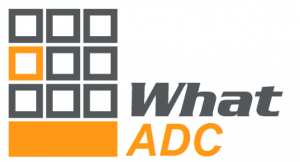 I’m happy to announce the availability of a new comparison category – starting today you will be able to compare various Application Delivery Controllers (ADC) solutions on WhatMatrix!
I’m happy to announce the availability of a new comparison category – starting today you will be able to compare various Application Delivery Controllers (ADC) solutions on WhatMatrix!
While I’ve been working with ADCs for a long time, I’ve invested a significant amount of time into this initiative over the last 6 months. No, not just gathering theoretical data, but also performing some in-depth testing to get a better feel for each product. Thanks to the listed vendors for providing me with detailed product information and sharing their vision and road-map for future functionality.
In the initial release we have included three leading vendors for Application Delivery Controlers:
- Citrix (Netscaler)
- Radware (Alteon)

- Avi Networks (Vantage)
 We have a number of vendors that will be added to the category shortly as well.
We have a number of vendors that will be added to the category shortly as well.
If you are a vendor with an ADC product that you would like us to add (and you haven’t spoken to us yet) – get in touch here or mail us! (listings are free)
Since an ADC product can come in many shapes and sizes, the focus in the initial comparison is more about “vendor capability & feature focus” rather than the differences in every product/edition that the vendor might offer. This highlights how much the ADC landscape has changed over the years.
In the “earlier” years the core focus of an ADC was to provide load-balancing and deliver high-availability for different services – both inside and external to an organisation. Most vendors provided this with physical appliances in the datacenter to ensure high performance on SSL-based traffic.
In the later years most vendors wanted to align with virtualization trends, so vendors like KEMP, F5, Citrix and Radware made sure that their solutions were working for these deployment scenarios as well and shipped their software as virtual appliances.
With cloud-based deployments becoming more common, we saw many cloud providers offering (at least) simple load balancing mechanisms themselves, forcing ADC vendors to ‘up’ their game in terms of delivering unique features, in order to keep themselves attractive & relevant for these deployments.
today ADCs play an even more critical role in terms of delivering high-availabilty, traffic optimization, handling DDoS attacks, acting as an identity provider and optimizing services.
Enter 2016, with the rise of containers and micro-services, hybrid cloud models and with the majority of services being delivered as “SaaS offerings” … today ADCs undoubtedly play an even more critical role in terms of delivering high-availabilty, traffic optimization, handling DDoS attacks, acting as an identity provider and optimizing services. It will also be interesting to see how the different vendors interact with software-defined networking layers and how some vendors in this field will aim for tighter integration with the virtualization layer instead of just serving as virtual appliance.
There is a lot of innovation happening in this field, so I do hope you enjoy the comparison and my upcoming blog coverage! I welcome any feedback, don’t hesitate to get in touch!
Marius Sandbu – Category Consultant (ADC)
http://msandbu.org/


Latest posts by Community Author (see all)
- WhatMatrix Q&A with Citrix– Virtual Desktop, DaaS, VDI and WVD - July 5, 2020
- We hope you are well – help for vendors – free lead generation - March 27, 2020
- Landscape Report Guidance: Cloud Management Platforms - February 5, 2020





